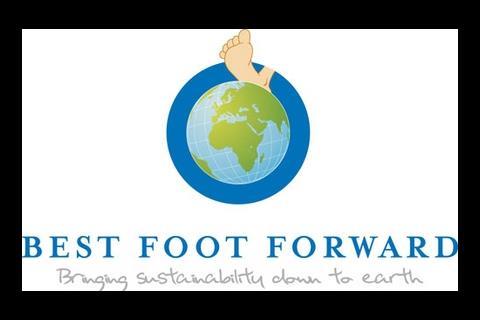In the second part of our Footprinting in Construction report experts Best Foot Forward highlight six key issues to remember when drawing up a footprint assessment
The four sustainability reports we assessed - the Cement Sustainability Initiative, Tube Lines, the National Health Service and property consultancy Upstream - are clearly very different. However they highlight some of the key issues that organisations face when they footprint their activities – and then communicate their carbon performance to third parties.
Be transparent
Unlike the communicating of financial accounts, carbon reporting requirements are currently non-mandatory and fairly loose. Only the NHS report gave sufficient detail to properly assess the accounting methods and assumptions. Without this level of detail readers will not be able to fairly judge the true carbon performance of an organisation.Decide what your objectives are
If you want to benchmark your performance against others you will need to ensure a consistent accounting approach within your sector (e.g. like the Cement Sustainability Initiative have done). If you want the measure for internal diagnostics then you can more easily decide what method will better inform your environmental strategy.Remember ‘Scope 3’ or embodied emissions
Although the reporting of carbon emissions associated with procurement and staff commuting is optional under the major reporting standards, organisations are increasingly finding they should quantify these impacts if they want their environmental position to be properly assessed.Unlike the communicating of financial accounts, carbon reporting requirements are currently non-mandatory and fairly loose
It’s not just carbon
Emissions of all six Kyoto greenhouse gases should be reported if relevant – not just carbon dioxide. This is especially true for industries that contribute significant amounts of these process emissions e.g. metal and chemical producers. Like omitting ‘Scope 3’ emissions (see above), ignoring non-carbon gases in these industries could quickly get your report labelled as ‘greenwash’.Be absolute – not just relative
Absolute cuts in emissions are needed if we are to meet international climate change targets – not just increased carbon efficiencies per unit of production. Cuts in the latter are far easier to achieve as organisations grow so don’t be tempted to just report these achievements and sweep rises in total emissions under the corporate carpet.Footprinting based on Input-Output Analysis has limitations
‘Environmental Input-Output Analysis’ for calculating organisational carbon footprints does not facilitate diagnostics or benchmarking. These financial models use the average carbon intensity of a pound spent in different sectors to calculate total emissions of an organisation. This method lacks the granularity required when it comes to developing and monitoring reduction plans. Instead you should rely on methods which use ‘physical data’ – e.g. tonnes of material purchased, litres of oil used or kilometres of distance travelled.Postscript
About Best Foot Forward
Best Foot Forward is one of Europe's leading sustainability consultancies specialising in energy and natural resource accounting methods such as carbon and ecological footprinting. Established in 1997 they have successfully completed over 1,000 footprint analyses and worked with organisations from a wide range of sectors, including the construction industry. They are recognised pioneers in this field, and were consequently presented with the 2005 Queen’s Award for Sustainable Development for their footprinting work.





























No comments yet